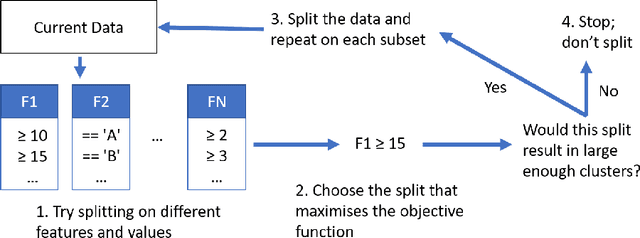DETECT: A Hierarchical Clustering Algorithm for Behavioural Trends in Temporal Educational Data
Paper and Code
May 04, 2020



Techniques for clustering student behaviour offer many opportunities to improve educational outcomes by providing insight into student learning. However, one important aspect of student behaviour, namely its evolution over time, can often be challenging to identify using existing methods. This is because the objective functions used by these methods do not explicitly aim to find cluster trends in time, so these trends may not be clearly represented in the results. This paper presents `DETECT' (Detection of Educational Trends Elicited by Clustering Time-series data), a novel divisive hierarchical clustering algorithm that incorporates temporal information into its objective function to prioritise the detection of behavioural trends. The resulting clusters are similar in structure to a decision tree, with a hierarchy of clusters defined by decision rules on features. DETECT is easy to apply, highly customisable, applicable to a wide range of educational datasets and yields easily interpretable results. Through a case study of two online programming courses (N>600), this paper demonstrates two example applications of DETECT: 1) to identify how cohort behaviour develops over time and 2) to identify student behaviours that characterise exercises where many students give up.
 Add to Chrome
Add to Chrome Add to Firefox
Add to Firefox Add to Edge
Add to Edge